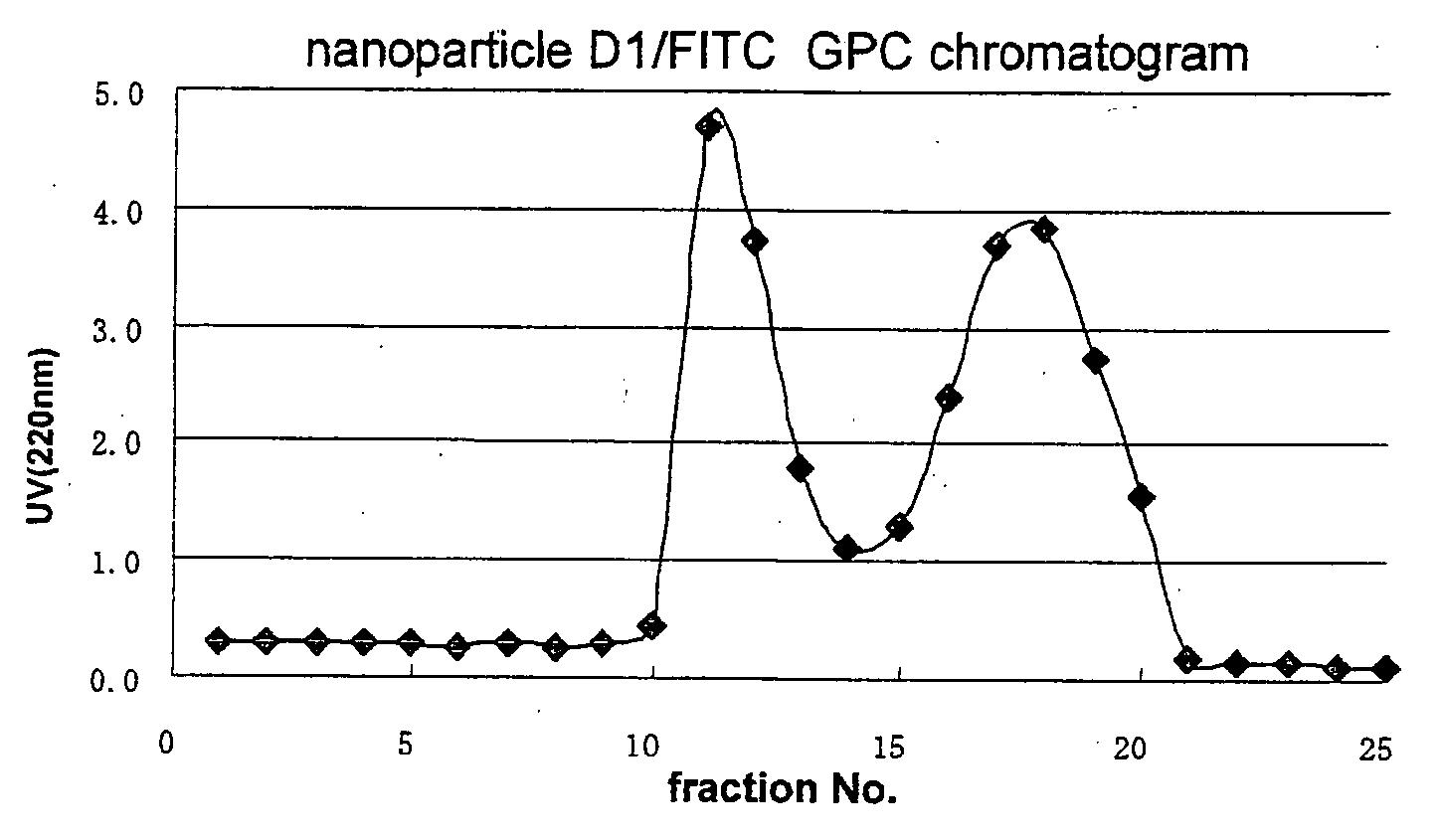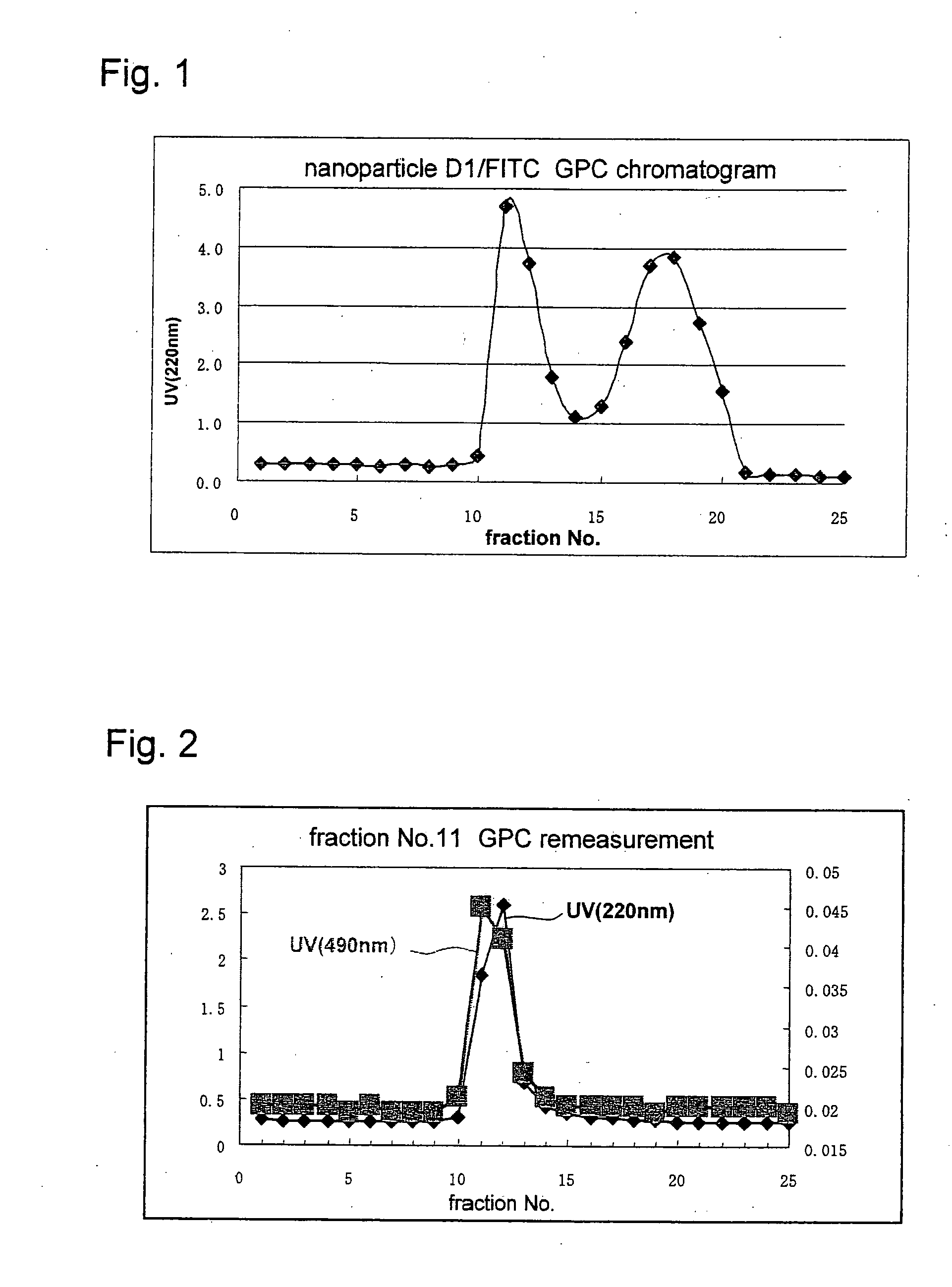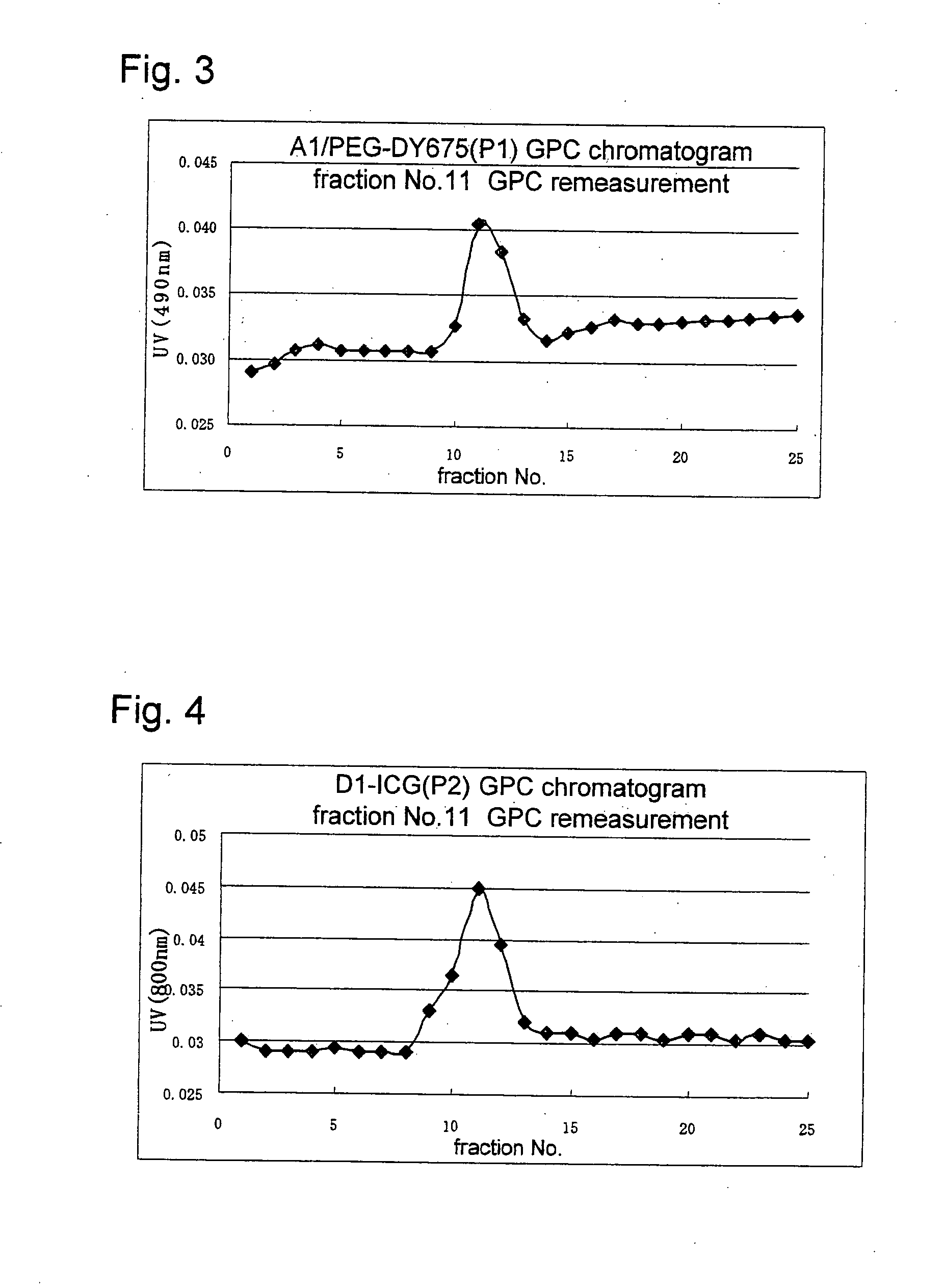Novel amphiphilic substance, and drug delivery system and molecular imaging system using the same
- Summary
- Abstract
- Description
- Claims
- Application Information
AI Technical Summary
Benefits of technology
Problems solved by technology
Method used
Image
Examples
example 1
Synthesis of Compound (a) (Example Obtained by Introducing Hydrophobic Block into N Terminal of Sar Chain)
[0127] 1.0 mL of an N, N-dimethylformamide solution containing 5.7 μL of n-hexylamine was added to 4.4 mL of an N,N-dimethylformamide (DMF) solution containing 100 mg of sarcosine-NCA (Sar-NCA) (NCA: amino acid N-carboxy anhydride) in an argon gas atmosphere. The thus obtained solution was stirred at room temperature for about 5 hours under reduced pressure. To the solution, 8.6 mL of an N,N-dimethylformamide solution containing 150 mg of alanine-NCA (Ala-NCA) was added, and the resulting solution was stirred overnight at room temperature under reduced pressure. Then, diethyl ether was added to the solution to obtain precipitation. The precipitation was washed several times with diethyl ether, and was then dried under reduced pressure to obtain 60 mg of a white solid compound (a).
[0128] The compound (a) was identified by 1H-NMR (400 MHz, TFA-d). As a result, the peak of N-met...
example 2
Synthesis of Compound (b) (Example Obtained by Introducing Functional Group into C Terminal)
[0129] 1.0 mL of an N,N-dimethylformaide solution containing 14 mg of 5-amino-2-(bis((methoxycarbonyl)methyl)amino)methyl hexanoate was added to 4.4 mL of an N,N-dimethylformamide solution containing 100 mg of sarcosine-NCA (Sar-NCA) in an argon gas atmosphere. The thus obtained solution was stirred at 50° C. for about 5 hours under reduced pressure. To the solution, 8.6 mL of an N,N-dimethylformamide solution containing 150 mg of alanine-NCA (Ala-NCA) was added, and the resulting solution was stirred overnight at 50° C. under reduced pressure. Then, diethyl ether was added to the solution to obtain precipitation. The precipitation was washed several times with diethyl ether, and was then dried under reduced pressure to obtain 50 mg of a white solid compound (b0).
[0130] 10 equivalents of a 1.0 mol / L aqueous sodium hydroxide solution was added to 20 mL of a methanol solution containing 50 m...
example 3
Synthesis of Compound (c) (Example Obtained by Introducing Hydrophobic Polyester Chain into N Terminal)
[0131] 0.05 eq. of 2-methoxyethylamine dissolved in nitrobenzene was added to a nitrobenzene solution of sarcosine-NCA (Sar-NCA) (200 mg, 1.0 eq.) so that the concentration of Sar-NCA was 0.3 M. The thus obtained solution was stirred at room temperature for 3 hours in an argon gas atmosphere. Then, 0.3 eq. of lactide dissolved in a small amount of nitrobenzene was added to the solution and further stirred at 120° C. overnight. The reaction solution was subjected to distillation under reduced pressure to remove the solvent therefrom, and was then purified by size exclusion chromatography LH20 (eluant:DMF) and reprecipitated in diethyl ether to collect a compound (c).
PUM
| Property | Measurement | Unit |
|---|---|---|
| Particle size | aaaaa | aaaaa |
| Amphiphilic | aaaaa | aaaaa |
| Hydrophilicity | aaaaa | aaaaa |
Abstract
Description
Claims
Application Information
 Login to View More
Login to View More - R&D
- Intellectual Property
- Life Sciences
- Materials
- Tech Scout
- Unparalleled Data Quality
- Higher Quality Content
- 60% Fewer Hallucinations
Browse by: Latest US Patents, China's latest patents, Technical Efficacy Thesaurus, Application Domain, Technology Topic, Popular Technical Reports.
© 2025 PatSnap. All rights reserved.Legal|Privacy policy|Modern Slavery Act Transparency Statement|Sitemap|About US| Contact US: help@patsnap.com



